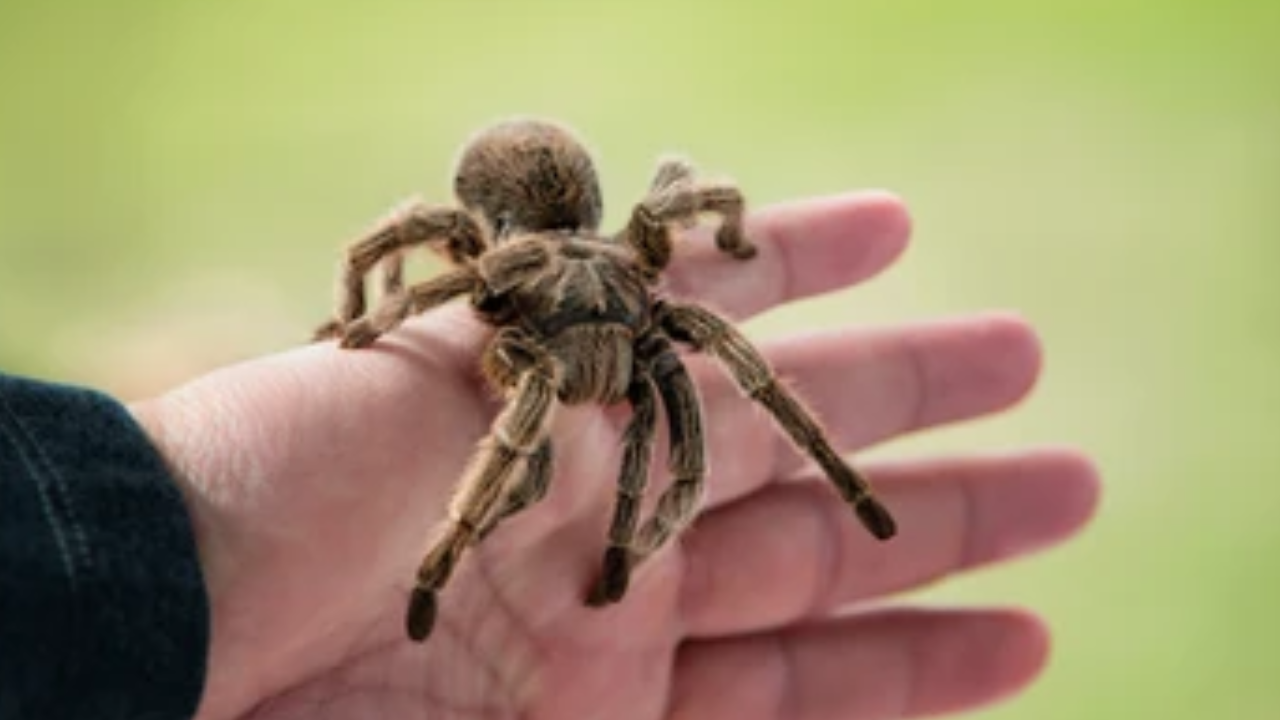The Chilean Rose Tarantula (Grammostola rosea or Grammostola porteri) is one of the most popular pet tarantulas in the world—and for good reason. With its striking appearance, calm demeanor, and relatively simple care requirements, this arachnid has won the hearts of both beginner and experienced keepers.
We’ll explore everything you need to know about the Chilean Rose Tarantula, from its natural habitat and behavior to enclosure setup, feeding, handling, and common health concerns.
Species Overview: Getting to Know the Chilean Rose Tarantula
Origin & Natural Habitat
The Chilean Rose Tarantula is native to the arid shrublands and deserts of Chile, Bolivia, and Argentina. Unlike tropical tarantulas, this species thrives in dry environments with moderate temperatures, making it well-suited for captivity.
Appearance & Size
- Coloration: Typically shades of brown, gray, or rose-pink (hence the name). Some have a striking metallic sheen.
- Size: Adults reach 5 to 6 inches in leg span, with females being larger and longer-lived.
- Lifespan: Females can live 15-20 years, while males usually live 5-10 years.
Temperament: Are They Aggressive?
One of the biggest appeals of this species is its docile nature. Unlike more defensive tarantulas, the Chilean Rose tends to be calm and slow-moving. However, like all tarantulas, it can flick urticating hairs if stressed, which can irritate skin and eyes.
Setting Up the Perfect Enclosure
Tank Size & Type
- A 10 to 20-gallon terrarium is ideal for an adult.
- Ventilation is crucial—use a mesh lid to prevent escapes while allowing airflow.
Substrate & Humidity
- Substrate: A mix of coconut fiber, peat moss, or organic topsoil (4-6 inches deep for burrowing).
- Humidity: Keep between 50-70% (lightly mist one side of the enclosure occasionally).
- Temperature: Maintain 70-80°F (21-27°C)—no heat lamps needed (room temperature is usually fine).
Decor & Hiding Spots
- Provide a cork bark hide or half-buried flower pot for shelter.
- Avoid sharp objects—tarantulas can injure themselves if they fall.
Feeding & Nutrition
What Do Chilean Rose Tarantulas Eat?
- Primary Diet: Crickets, dubia roaches, and mealworms (live or pre-killed).
- Feeding Frequency:
- Juveniles: 2-3 times per week.
- Adults: Once a week (they can go weeks without eating).
Important Feeding Tips
- Remove uneaten prey after 24 hours to avoid stress.
- Avoid overfeeding—obesity can shorten their lifespan.
- Provide a shallow water dish (change water regularly).
Behavior & Handling: Should You Hold Your Tarantula?
Understanding Their Personality
- Mostly sedentary, preferring to sit in one spot for long periods.
- May fast for weeks or months—this is normal (especially before molting).
Handling: Yes or No?
- Not recommended unless necessary (e.g., during enclosure cleaning).
- If you do handle:
- Move slowly to avoid startling it.
- Keep close to the ground to prevent falls (tarantulas are fragile).
- Watch for stress signs (flicking hairs, rearing up).
Molting: What to Expect
Signs Your Tarantula Is About to Molt
- Loss of appetite (may stop eating for weeks).
- Darker, duller coloration.
- Increased webbing (some create a “molting mat”).
During & After Molting
- DO NOT disturb it—this is a vulnerable time.
- Wait at least a week before feeding (new exoskeleton needs to harden).
Common Health Issues & How to Prevent Them
Dehydration
- Signs: Shriveled abdomen, lethargy.
- Solution: Provide a water dish and lightly mist the enclosure.
Parasites (Mites)
- Signs: Tiny white bugs crawling on the tarantula.
- Solution: Remove contaminated substrate, clean the enclosure.
Injuries from Falls
- Prevention: Avoid tall enclosures—tarantulas are poor climbers.
FAQs About Chilean Rose Tarantula
Q: Are Chilean Rose Tarantula venomous?
A: Yes, but their venom is mild—comparable to a bee sting. Bites are rare and usually painless.
Q: Can they live together?
A: No! They are solitary and may fight to the death if housed together.
Q: Why isn’t my tarantula eating?
A: Could be pre-molt, stressed, or simply not hungry. As long as its abdomen is plump, don’t worry.
Conclusion: Is the Chilean Rose Tarantula Right for You?
If you’re looking for a low-maintenance, long-lived, and visually stunning pet tarantula, the Chilean Rose Tarantula is an excellent choice. With proper care—a secure enclosure, correct humidity, and a steady diet—this species can thrive for decades.
While they aren’t the most interactive pets, their unique beauty and fascinating behaviors make them a rewarding addition to any arachnid lover’s collection.
Ready to welcome a Chilean Rose Tarantula into your home? Now that you’re equipped with the essential care knowledge, you can confidently provide a safe and enriching environment for your new eight-legged friend!
Final Thoughts
This guide covers everything a beginner needs to successfully care for a Chilean Rose Tarantula. Whether you’re just researching or already own one, understanding their needs ensures a healthy, happy spider for years to come.
Would you like any additional details on breeding, color variations, or advanced care tips?

















